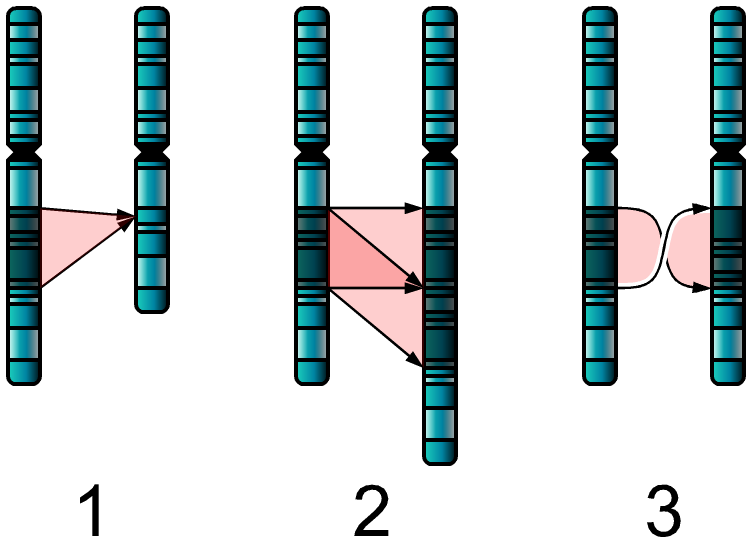Autism causes
|
Autism Microchapters |
|
Diagnosis |
|---|
|
Treatment |
|
Case Studies |
|
Autism causes On the Web |
|
American Roentgen Ray Society Images of Autism causes |
Editor-In-Chief: C. Michael Gibson, M.S., M.D. [1]
Overview
Autism and autism spectrum disorders are complex neurodevelopmental disorders. Many causes of autism have been proposed, but its theory of causation is still incomplete[1]. Heritability contributes about 90% of the risk of a child developing autism, but the genetics of autism are complex and typically it is unclear which genes are responsible[2]. In rare cases, autism is strongly associated with agents that cause birth defects[3]. Many other causes have been proposed, such as exposure of children to vaccines; these proposals are controversial and the vaccine hypotheses have no convincing scientific evidence[4].
Causes

Autism has a strong genetic basis, although the genetics of autism are complex and it is unclear whether ASD is explained more by multigene interactions or by rare mutations with major effects.[6] Early studies of twins estimated heritability explains more than 90% of the risk of autism, assuming a shared environment and no other genetic or medical syndromes. However, most of the mutations that increase autism risk have not been identified. Typically, autism cannot be traced to a Mendelian (single-gene) mutation or to single chromosome abnormalities such as Angelman syndrome or fragile X syndrome, and none of the genetic syndromes associated with ASDs has been shown to selectively cause ASD.[6] There may be significant interactions among mutations in several genes, or between the environment and mutated genes. Numerous candidate genes have been located, with only small effects attributable to any particular gene.[6] The large number of autistic individuals with unaffected family members may result from copy number variations (CNVs)—spontaneous deletions or duplications in genetic material during meiosis.[7] Hence, a substantial fraction of autism may be highly heritable but not inherited: that is, the mutation that causes the autism is not present in the parental genome.[5]
All known teratogens (agents that cause birth defects) related to the risk of autism appear to act during the first eight weeks from conception, and though this does not exclude the possibility that autism can be initiated or affected later, it is strong evidence that autism arises very early in development.[3] Although evidence for other environmental causes is anecdotal and has not been confirmed by reliable studies, extensive searches are underway.[8] Environmental factors that have been claimed to contribute to or exacerbate autism, or may be important in future research, include certain foods, infectious disease, heavy metals, solvents, diesel exhaust, PCBs, phthalates and phenols used in plastic products, pesticides, brominated flame retardants, alcohol, smoking, illicit drugs, and vaccines. Although parents may first become aware of autistic symptoms in their child around the time of a routine vaccination, and parental concern about vaccines has led to a decreasing uptake of childhood immunizations and an increasing likelihood of measles outbreaks, there is overwhelming scientific evidence showing no causal association between the measles-mumps-rubella vaccine and autism, and there is no scientific evidence that the vaccine preservative thiomersal helps cause autism.[9]
References
- ↑ Trottier G, Srivastava L, Walker CD (1999). "Etiology of infantile autism: a review of recent advances in genetic and neurobiological research". J Psychiatry Neurosci. 24 (2): 103–115. PMID 10212552. Retrieved 2007-07-16.
- ↑ Freitag CM (2007). "The genetics of autistic disorders and its clinical relevance: a review of the literature". Mol Psychiatry. 12 (1): 2–22. doi:10.1038/sj.mp.4001896. PMID 17033636.
- ↑ 3.0 3.1 Arndt TL, Stodgell CJ, Rodier PM (2005). "The teratology of autism". Int J Dev Neurosci. 23 (2–3): 189–99. doi:10.1016/j.ijdevneu.2004.11.001. PMID 15749245.
- ↑ Rutter M (2005). "Incidence of autism spectrum disorders: changes over time and their meaning". Acta Paediatr. 94 (1): 2–15. PMID 15858952.
- ↑ 5.0 5.1 Beaudet AL (2007). "Autism: highly heritable but not inherited". Nat Med. 13 (5): 534–6. doi:10.1038/nm0507-534. PMID 17479094.
- ↑ 6.0 6.1 6.2 Abrahams BS, Geschwind DH (2008). "Advances in autism genetics: on the threshold of a new neurobiology". Nat Rev Genet. 9 (5): 341–55. doi:10.1038/nrg2346. PMID 18414403.
- ↑ Sebat J, Lakshmi B, Malhotra D; et al. (2007). "Strong association of de novo copy number mutations with autism". Science. 316 (5823): 445–9. doi:10.1126/science.1138659. PMID 17363630.
- ↑ Szpir M (2006). "Tracing the origins of autism: a spectrum of new studies". Environ Health Perspect. 114 (7): A412–8. PMID 16835042.
- ↑ Vaccines and autism: